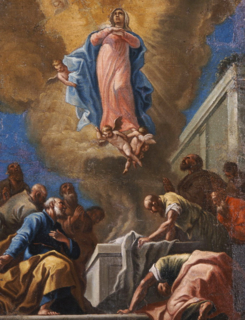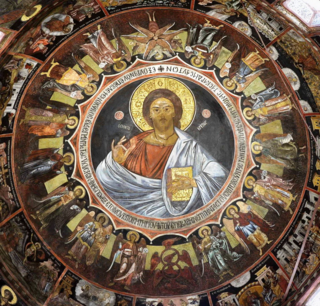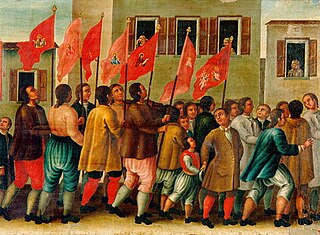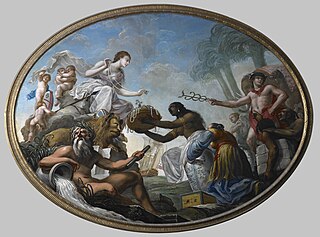 W
WEustație Altini was a Moldavian painter of Greek ancestry; specializing in decorative art and iconostases. He studied in Austria with famous painters Heinrich Friedrich Füger, Johann Baptist Lampi and Hubert Maurer. He was one of few Greek painters to migrate outside of Greece, others included El Greco and Belisario Corenzio. His work completely escaped the typical Greek mannerisms prevalent within the work of his contemporaries. He adapted a unique style mainly influenced by German Austrian art. He influenced 19th-century Romanian art.
 W
WAndreas Karantinos, also known as Andreas Karandinos. He was Greek Renaissance painter, educator and goldsmith. He was from Kefalonia. He was a member of the Heptanese School. His artwork is reflective of the time period. His teacher was famous painter Stephanos Tzangarolas. He adapted his style. Karandinos also emulated the Cretan masters such as Michael Damaskinos. Many Greek painters emulated one other. Karandinos also taught famous Greek painter Konstantinos Kokkinos and several others. Many of his works are in Greece mostly on the island of Kefalonia. Twenty two of his work survived and one fresco. The fresco is of the Second Coming or the Last Judgement. The fresco is located in the church of Evagelastria in Kastro Kefalonia.
 W
WAntonios Skordilis. He was a Greek painter. He was active on the Cycladic Islands. Other notable Greek painters active on the islands were Christodoulos Kalergis, Emmanuel Skordilis and Defterevon Sifnios. Emmanuel Skordilis may have been related to Antonios. Antonios represents the Greek baroque and Rococo. The Greek community was undergoing the Modern Greek Enlightenment in art. He followed the typical Greek mannerisms. Both Emmanuel and Antonios influenced local artists namely Defterevon Sifnios. Thirteen of his works survived and two frescos. His remaining frescos are on the Cycladic island Sikinos.
 W
WChristodoulos Kalergis, also known as Christodoulos Kallergis. He is one of the few Greek painters that were not from Crete or the Ionian Islands. He was from the Cyclades. He was active on the island of Mykonos and the Peloponnese Region. He is a member of the Neo-Hellenikos Diafotismos in art and the Greek Rococo period. Emmanuel Skordilis brought the art of Crete to the Cyclades. He influenced Kalergis and other local artists. Kalergis's most notable piece is the Virgin and Child. His art resembles a mixture of late Byzantine art and the Venetian influenced maniera greca. Ten of his paintings and four frescos have survived. Around the period, another famous artist Nikolaos Kallergis shared the same last name.
 W
WDefterevon Sifnios, also known as Agapios Prokos and Defterevon of Sifnos. He was a painter, educator, and monk. He was from the island Sifnos, one of the Cyclades. He was one of the few Greek painters not active on the Ionian Islands. Other Greek painters associated with the Cyclades were Christodoulos Kalergis and Emmanuel Skordilis. He was affiliated with Mount Athos, another painter at the monastery complex around the same period was Makarios. Defterevon is a member of the Neo-Hellenikos Diafotismos in art and the Greek Neoclassical and Romantic period. His work leads Greek painting into the Modern Greek art period. His works are predominantly on the Cyclades. The islands are Serifos, Kimolos, Sifnos, and Kythnos. According to the Institute of Neohellenic Research, fifty-four of his paintings survived and two frescos.
 W
WDemetrios Nomikos was a Greek painter, goldsmith, and priest. He shared the same last name with other famous Greek painters. Georgios Nomikos, Demetrios Nomikos and his brother Nicholas Nomikos. He is one of the early representatives of the Heptanese School of painting. He was active during the Greek Baroque and Rococo. He worked with notable Greek painter Antonios Notaras. Konstantinos Kontarinis, Stylianos Stavrakis and Nikolaos Kallergis were active on the same islands around the same period. Nomikos was a master gilder. According to the Institute of Neohellenic Research, five of his works survived. His most notable works are at the Loverdos Museum.
 W
WDionysius of Fourna was an Eastern Orthodox author of a manual of iconography and painting in the 18th century.
 W
WNikolaos Doxaras. He was a Greek painter and teacher. His father was famous painter Panagiotis Doxaras. Panagiotis Doxaras was the father of the Greek Rococo and the Modern Greek Enlightenment in art. They are both prominent members of the Heptanese School. They refined Greek art bringing the Maniera Greca into the Maniera Italiana. Artists he influenced include: Nikolaos Kantounis, Nikolaos Koutouzis and Gerasimos Pitsamanos. His influence can be seen in some of Nikolaos Kantounis's paintings notably The Assumption. Nikolaos taught famous painter Nikolaos Koutouzis. Both Nikolaos Koutouzis and Doxaras artistic style refined the art of the Ionian Islands. Venetian painting influenced countless Greek artists who were living in the empire. From Michael Damaskinos to Theodore Poulakis. Twenty years after Nikolaos's death the style came to an end due to the Fall of the Republic of Venice. A new artistic style developed after the Greek Rococo which coincided with Neoclassicism in the rest of Europe called the middle Modern Greek Enlightenment in art also known as Neo-Hellenikos Diafotismos.
 W
WPanagiotis Doxaras (1662–1729) also known as Panayiotis Doxaras, was an author and painter. He was a prolific member of the Heptanese School. He was influenced by early members of the movement namely: Elias Moskos, Theodoros Poulakis, Stephanos Tzangarolas, Spyridon Sperantzas and Victor. The Heptanese School evolved during the Baroque period and continued into the Late Baroque or Rococo. Doxaras’s son Nikolaos Doxaras continued the artistic movement into the Neoclassical era. Both Panagiotis and his son Nikolaos Doxaras refined the school. The school was heavily influenced by the Venetian Style. The Heptanese School also influenced Italian painting. Other artists Doxaras influenced were Nikolaos Kantounis. Panagioti’s teacher was famous painter Leos Moskos. He studied with him while he was in Venice. Doxaras painted notable portraits of Johann Matthias von der Schulenburg. He introduced Maniera Italiana to the Heptanese School drastically changing the style from the Maniera Greca. He is considered the father of the Greek Rococo and the Modern Greek Enlightenment in art..
 W
WEfstathios Karousos also known as Eustathios Karousos, Efstathio Karousou (Greek: Ευστάθιο Καρουσου, Eustacchio Caruso and Eustachio Caruso. He was a Greek painter and writer. He is one of the elite painters from the island of Cephalonia. Other painters from the same region around the same period included Andreas Karantinos and Gerasimos Pitsamanos. He was active in Cephalonia, Naples, Trieste, and other parts of Italy. Some of his paintings have survived. He is one of few Greek painters to have worked and lived outside of the Venetian Empire. Both Karousos and Belisario Corenzio were active painters in Naples. Some of his work emulated the typical Heptanese School. According to the Institute of Neohellenic Research, forty-nine of his works survived. Thirty-eight of his works are in the church Santi Pietro e Paolo dei Greci.
 W
WGeorgios Markou also known as Georgios Markou of Argos (Greek: Γεώργιος Μάρκου ο Αργείος. He was a Greek fresco and icon painter. He was active during the Greek Baroque and Rocco periods. He was an artistic representative of the Neo-Hellenikos Diafotismos. He was one of the few Greek painters that worked outside of the Ionian Islands. Other painters that worked outside the Ionian Islands were Christodoulos Kalergis and Makarios. They were also fresco painters. Other Greek fresco painters that traveled all over Greece were Fragkos Katelanos, Theophanes the Cretan, and Frangos Kontaris. Markou was also one of the few prominent painters to have painted in Athens. His surviving works can be found all over the ancient city. He also completed works on the island of Salamina. Three icons survived and countless frescos exist at seven different sites. Some of the frescos are in very good condition. His most notable frescos are at the Monastery Faneromeni, Salamina, Greece.
 W
WGeorgios Nomikos was a Greek painter. He converted to Christianity from Judaism. He was a Greek Baroque painter. He was a member of the Cretan School and the Heptanese School. His contemporaries were Georgios Kastrofylakas, Theodore Poulakis, and Georgios Markou. He shared the same last name with famous Greek painter Demetrios Nomikos. He was active on the island of Zakynthos, Kefalonia Arta and Ioannina. Six of his paintings survived. Some of his frescos have survived in the destroyed church of Saint George in Lingiades, Ioannina. His work represents an evolution from the art of Angelos Akotantos and Elias Moskos to a more refined technique influenced by the art of the Ionion Islands.
 W
WIoanni Korai was a Greek painter that shared the same name as his famous uncle Ioannis Korais. He was a prominent painter on the Ionian Islands. His family migrated to Zakynthos from Chios. He was a member of the Heptanese School. His contemporaries were Dionysios Kallivokas and Nikolaos Koutouzis. He was taught painting by Ioannis Korais. He was active during the Modern Greek Enlightenment and Greek romanticism in art. He influenced countless Greek and Italian painters. Korai brought Greek artwork into the Modern Greek art period. Twelve of his paintings survived. His most notable painting is a portrait of Kyriakos Chorafas painted in 1826. The painting is at the National Gallery of Athens.
 W
WIoannis Kornaros was a Greek painter. He was one of the few painters from Crete during the 19th century. He does not belong to the Cretan Renaissance but was influenced by the art. He is consider one of the foremost icon painters of the Greek Neoclassical era and Modern Greek Enlightenment in art also known as Neo Hellenikos Diafotismos. He implemented a unique style. He was influenced by Michael Damaskinos, Georgios Klontzas, Victor and other Cretan artists. He influenced Modern Greek art. He is one few Greek painters affiliated with Cyprus. Others included Ioannis Kyprios and Theodore Apsevdis. His teacher was Georgios Kastrofylakas. His most famous painting Great Art Thou resembles Georgios Klontzas's In Thee Rejoiceth.
 W
WIoannis Moskos was a Greek painter that migrated to Venice. Two other very famous painters with the name Moskos were active around the same period Elias Moskos and Leos Moskos. Leos Moskos frequently traveled all over the Venitian Empire and was in Venice around the same period as Ioannis. He is not Elias Moskos's son. The Moskos painters may have had some relationship but documentation is unavailable. Ioannis painted in the traditional maniera greca and the Venetian style. His art resembles Michael Damaskinos and Andreas Pavias. He was affiliated with the church of San Giorgio dei Greci. He left a huge assortment of paintings that can be found all over the world. His most popular work is the The Crucifixion.
 W
WIoannis Skordilis was a Greek painter. He was active on the Cycladic islands. He shared the same last name as Antonios Skordilis and Emmanuel Skordilis. The family originally came from Crete. They were probably related. Skordilis was a prominent name associated with Cretan painting since the 1500s. Other notable painters of the Cycladic Islands were Christodoulos Kalergis, and Defterevon Sifnios. Twelve of his works survived. They are mainly on the Cycladic islands. His most notable work is at the Byzantine and Christian Museum. It is called the Holy Trinity and Saints. The piece is similar to a work completed by Emmanuel Tzanes; it was a common theme among Greek painters.
 W
WNikolaos Kallergis, also known as Kalergis. He was a Greek painter during the Greek Rococo and the Modern Greek Enlightenment in art also known as Neo-Hellenikos Diafotismos. His art also exhibited Venetian influence. Painters of the maniera greca began to refine their art. Philotheos Skoufos, Elias Moskos, and Theodore Poulakis were all active painters on the Ionian Islands prior to Kallergis. They set the stage for the transition to the Heptanese School. Panagiotis Doxaras is the forefather of the new painting style. He was the father of Greek Rococo and the Modern Greek Enlightenment in painting. Kallergis became an active member of the school. Kallergis also represents the Greek Rococo. His art began to exhibit qualities of Greek and Italian Neoclassicism. His style influenced countless painters. Examples include Nikolaos Kantounis, Nikolaos Koutouzis, Nikolaos Doxaras, Spiridione Roma, and Eustathios Karousos. His most famous work is Christ and Angel it is at the Zakynthos Museum.
 W
WNikolaos Kantounis or Kandounis was a Greek priest, painter and teacher who did not follow the traditional Maniera Greca. His teacher was the famous painter Nikolaos Koutouzis. He began to incorporate the Maniera Italiana into the Heptanese School. Kantounis, Panagiotis Doxaras, Nikolaos Doxaras and Koutouzis were all prolific members of that school. Kantounis was one of the most important painters in the Neoclassical Period in Greece. He was a representative of the middle to late Modern Greek Enlightenment in Greek art. Over 164 of his paintings have survived. He is known for painting many portraits. Some of his works resemble the style of Nikolaos Doxaras. He was also a member of the secret organization for Greek Independence called the Filiki Eteria.
 W
WGeorgios Kastrofylakas, also known as Georgios Kastrofylax or (Zorzis). He is one of the few Greek painters that remained in Crete. Others included Ioannis Kornaros. Kornaros was his student. Kastrofylakas followed the lines of the Cretan School. His work was influenced by legendary artists such as Georgios Klontzas, Michael Damaskinos and Angelos. Historians argue Kastrofylakas had many students due to the resemblance of his work. He belongs to the Neo-Hellenikos Diafotismos in painting and the Greek Rococo period. He influenced countless Greek iconographers. Thirty-six paintings are attributed to Kastrofylakas. The artist added more realism to his paintings. Most of his artwork is in Heraklion, Crete. His most notable work is the Adoration of the Magi.
 W
WKonstantin Kapıdağlı, born Konstantinos Kyzikinos, was a Greek–Ottoman court painter from the late 18th century to the early 19th century. Most of his works were created around 1789–1806.
 W
WKonstantinos Kontarinis, also known as Konstantino Kontarini. He was a Greek Baroque painter. He was an eminent painter of the Heptanese School. He was heavily influenced by the works of Theodore Poulakis. His contemporaries at the time were Stephano Tzangarola and Panagiotis Doxaras. His work signals a transition for the Cretan School to the more refined Heptanese School. Kontarinis clearly follows the traditional maniera greca. The art was heavily influenced by the Venetian style. He influenced the works of countless Greek and Italian painters namely Spyridon Sperantzas and Nikolaos Kallergis. According to the Institute of Neohellenic Research, eighty-five of his works survived. His most notable work is the portable icon consisting of Scenes from Genesis. It is featured at the Byzantine Museum Athens, Greece.
 W
WIoannis Korais was a Greek painter. He was a prominent member of the Heptanese School. His contemporaries were Nikolaos Doxaras and Nikolaos Koutouzis. His family was from the island of Chios. He was the grandson of the painter Michael Korais from Chios. He helped revolutionize Greek painting. He was a follower of Panagiotis Doxaras and the new techniques he was employing.
 W
WNikolaos Koutouzis, or Koutousis was a Greek painter, poet and priest. He was part of the Heptanese School, but also a member of the Modern Greek Enlightenment in art. His teacher was the painter Nikolaos Doxaras. Koutouzis has 136 paintings attributed to him. He was one of the last Greek painters to incorporate the Venetian style during its decline, due to the Fall of the Republic of Venice. He was the teacher of Nikolaos Kantounis, who was heavily influenced by his style.
 W
WMakarios also known as Makarios of Galatista. He was a member of a family of monks that were active on Mount Athos. He is one of few Greek painters not associated with Italy, Crete, and the Ionian Islands. Makarios and his nephews Veniamin, Zakarias, and Giorgios painted frescos at the historic monastery complex. Other notable Greek painters associated with the monastery were Theophanes the Cretan and Fragkos Katelanos. His style was influenced by existing works on Mount Athos but he was also exposed to the Macedonian Palaeologan Renaissance. Most of Makarios's remaining works are at Mount Athos. His most notable work is the Nursing Madonna or Galaktotrophousa. Another notable Greek painter who painted the Galaktotrophousa was Antonios Papadopoulos.
 W
WMichael Prevelis. He was a Greek painter. He was active on the island of Crete during the eighteenth century. He was one of few Greek painters still active on the island. Other painters included: Ioannis Kornaros and Georgios Kastrofylakas. His work diverged from the traditional Greek mannerism. He was a representative of the Neo-Hellenikos Diafotismos in art, he was another representative of the Greek Rococo and Baroque periods. The Greek mannerisms were reflected in iconography and other painted mediums at the time. Nine of his works have survived they are all located at the Preveli Monastery. His most notable work is the Book of Revelation.
 W
WIakovos Moskos or Moschos was a Greek painter. He shared the same name as three other famous Greek painters Ioannis Moskos, Elias Moskos and Leos Moskos. He was affiliated with Saint Catherine's Monastery. Moskos painted in the typical Greek style. He was active during Greek Rococo and the end of the baroque period in Greek art. Ioannis Kornaros was exposed to his work while he was at the monastery. He was known for painting the Holy place of Mount Sinai the assumed location where Moses received the commandments. It is his most notable work. Eight of his paintings have survived.
 W
WGerasimos Pitsamanos or Pitzamanos was a Greek architect and portrait painter. Most of his known works are watercolors.
 W
WSpiridione Roma (Greek: Σπυρίδων Ρώμας, also known as Spiridon or Spyridon Romas, was a Greek-Italian painter, best known for his work in England.
 W
WSpyridon Sperantzas was a Greek painter. He flourished during the Greek Neoclassical era and the Modern Greek Enlightenment in art also known as Neo-Hellenikos Diafotismos. Because of the Fall of the Republic of Venice, Sperantzas brought the Heptanese School into the Greek Romantic period. By the 1800s the Ionian Islands were occupied by both French and English forces and for the first time since the fall of the Byzantine Empire, the local Greeks governed themselves. Sperantzas, Nikolaos Kantounis, and Nikolaos Koutouzis represent the transition in painting that defined Modern Greek art. Sperantzas was influenced by Nikolaos Kallergis, Nikolaos Doxaras, and Nikolaos Koutouzis. His son Michael Sperantzas was also a famous painter and his apprentice. Spyridon also painted frescos.
 W
WDemetrios Stavrakis, also known as the so-called Romanos. He was a Greek painter. He was a representative of the Heptanese School. His uncles were famous painters Andreas Stavrakis and Stylianos Stavrakis. They were active on the island of Zakynthos. There were many Greek painters on the island around the same period namely Nikolaos Koutouzis, Nikolaos Kantounis, and Ioannis Korais. Demetrios influenced both Greek and Italian artists. According to the Institute of Neohellenic Research, fifteen of his works survived. His most notable work was the Profit Jonah.
 W
WStylianos Stavrakis, was a Greek painter during the Neo-Hellenic Enlightenment era in art. He was a goldsmith and painter. He was very active on the Ionian Islands. Nikolaos Koutouzis, Nikolaos Doxaras and Nikolaos Kallergis were all active in Zakynthos during the same period. He is a prominent member of the coveted Heptanese painting style. He comes from a family of painters. His brother Andreas Stavrakis and nephew Demetrios Stavrakis were both famous painters. He influenced countless artists. Konstantinos Kontarinis and other artists of the Ionian Islands began to emulate his work. His most notable work is the Descent from the Cross. Fourteen of his paintings survived. Most of them can be found in Zakynthos, Greece.
 W
WStylianos Devaris, also known as Defaris and Kornaros respectively. He was a Greek painter and goldsmith. He was one of the prominent painters from the island of Lefkada. He was a member of the Heptanese School. The island featured many painters namely: Konstantinos Kontarinis, Spyridon Ventouras, Spyridon Maratzos, and Makarios Lefkas. A notable theme popular on the island was John Chrysostom, Criticizing Empress Eudoxia. Stylianos painted his own version of the theme. Spyridon Ventouras and Makarios Lefkas also painted their versions. Devaris mainly painted ecclesiastical themes. According to the Institute of Neohellenic Research, over nineteen of his paintings have survived. His most notable work was John Chrysostom, Criticizing Empress Eudoxia.
 W
WStephanos Tzangarolas also known as Stephano Tzangarola. He was a Greek painter during the late Cretan Renaissance. He migrated from Crete to the island of Corfu. He is a member of the Heptanese School and the Cretan Renaissance. His contemporaries at the time were Panagiotis Doxaras, Theodore Poulakis and Elias Moskos. His artwork began to reflect the transition of the classical maniera greca of Crete to the more refined style of the Ionian Islands. His style resembles the transition of Gentile da Fabriano and Fra Angelico from the maniera greca to their respective styles. Tzangarolas paintings influenced countless artists both Italian and Greek. Some artists that reflect his style include Spyridon Sperantzas and Georgios Kastrofylakas. His paintings can be found all over Greece mainly Athens and the Ionian Islands. Some of his work is in Cairo and London. His student was famous Greek painter Andreas Karantinos.
 W
WSpyridon Ventouras also known as Spyridon Venturas. He was a Greek painter, professor and architect. He was a prominent member of the Heptanese School. He represented the art of Lefkada. Many Greek painters were associated with the island namely: Konstantinos Kontarinis, Stylianos Devaris, Spyridon Maratzos, and Makarios Lefkas. Other active painters of the Heptanese School during the same period were Nikolaos Koutouzis and Nikolaos Kantounis. The Greek community was undergoing the Neo-Hellenikos Diafotismos in art. Ventouras influenced countless artists both Greek and Italian. The painting of John Chrysostom, Criticizing Empress Eudoxia was copied by many painters from the region. Some of the artists were Makarios Lefkas and Stylianos Devaris. Ventouras also painted his own version. According to the Institute of Neohellenic Research, over sixty of his paintings have survived, five of them were notable portraits. His most notable work was a Portrait of Ali Paschi.